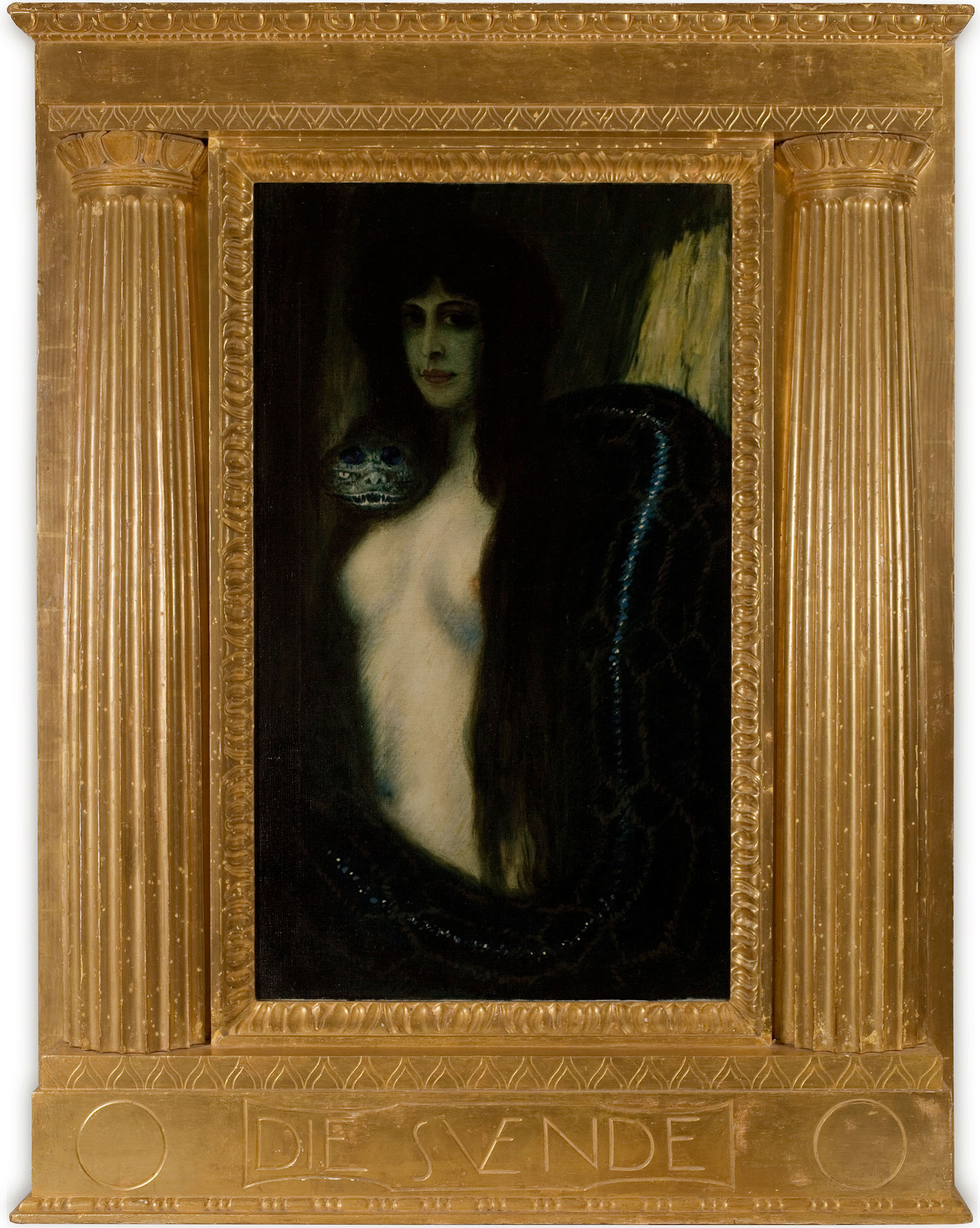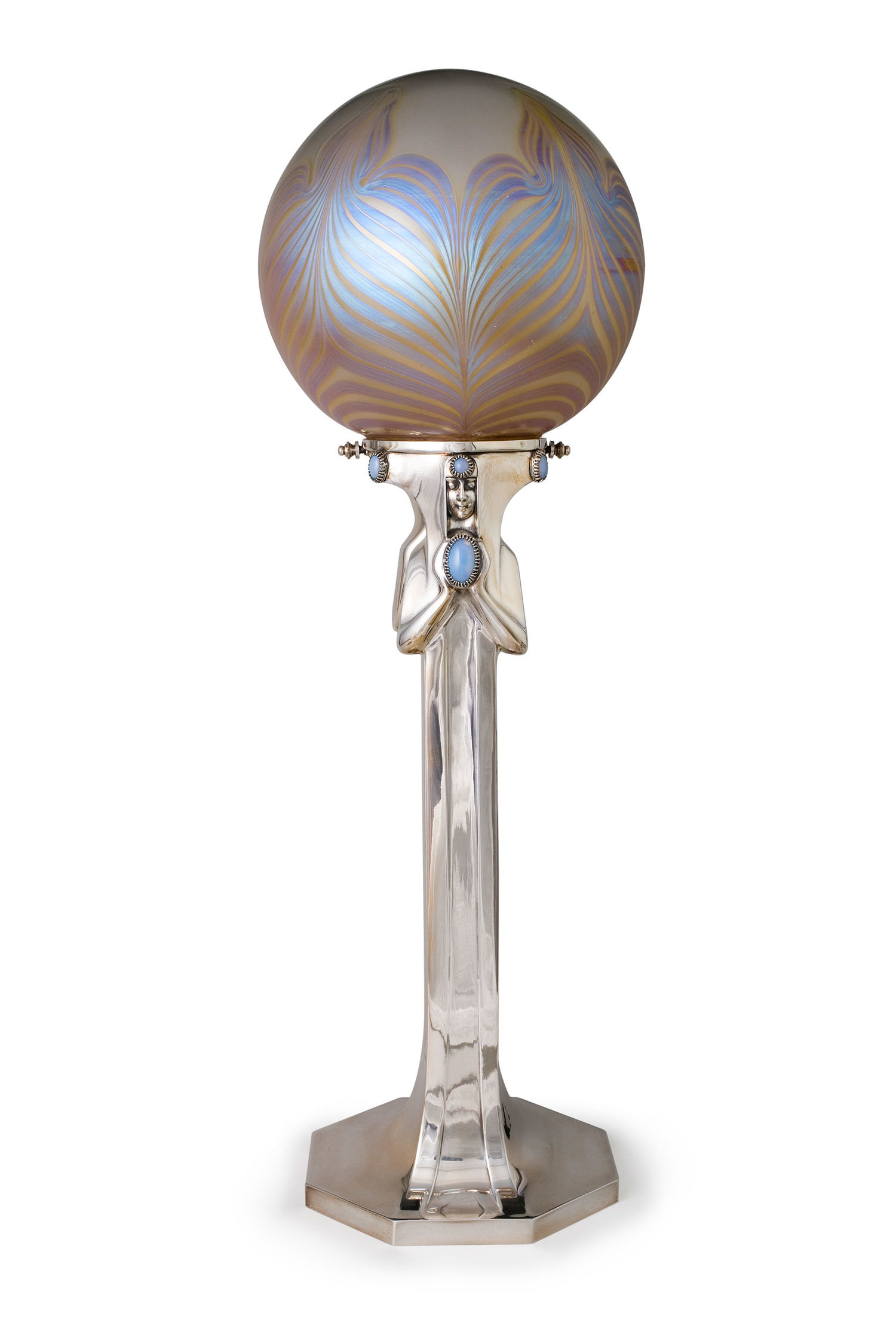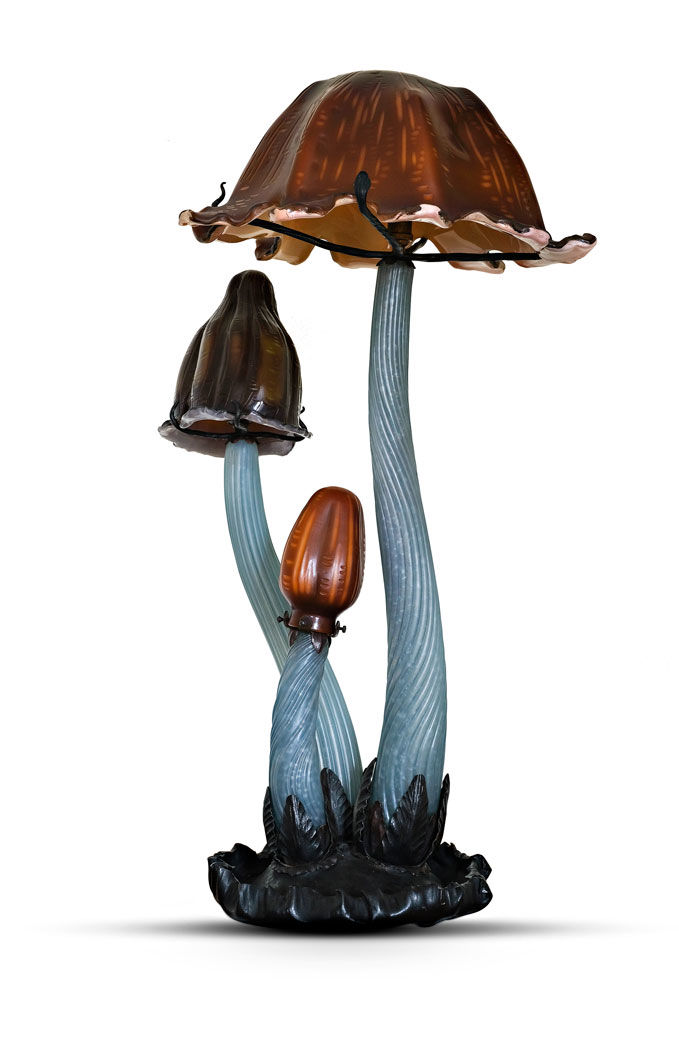29 Jun 19
Alphonse Mucha, The Nature, around 1900. Permanent Loan. Collection F. W. Neess, Photo: Museum Wiesbaden / Bernd Fickert
Jugendstil (also known as Art Nouveau) was a revolutionary art movement. It asserted a form of modern art that was attuned to its own era, and drew its themes both from nature and from the visual language of the human being and their passions. As such, Jugendstil used art to explored and discovered possibilities for a utopian and aesthetically determined form of society. Emerging from the dynamism of nature and the vitality of youth, findesiècle art also embodied the darker side of life, most notably through Symbolism and its bleak aesthetics of decay, myth and mystery. The aim was to create a Gesamtkunstwerk that would erase the divisions between life and art.
Museum Wiesbaden is presenting the collection of Ferdinand Wolfgang Neess as a permanent display in the southern wing of the museum. More than 500 objects provide a crosssection of all the genres of Jugendstil, providing prime examples of the quality and stylistic virtuosity boasted by the art of the late nineteenth century. With the first public presentation of the Neess Collection on 29 June 2019, Museum Wiesbaden will be showing this outstanding collection to a broader audience for the very first time in its entirety, and in the process, putting Wiesbaden on the map of Jugendstil cities in Europe.


Jugendstil was the last genuinely European style of art, and it emerged in response to European industrialisation and historicism. Its proponents turned away from historicism, instead searching for a style that was proper to the era and bore its own, unique character. Their guiding principle was the imitation of nature, which they sought to achieve by means of curvilinear forms and floral ornamentation. However more sombre, symbolist forms also had an impact on findesiècle art and culture.
It was above all the addition of artistic elements to functional everyday objects that characterised Jugendstil painting, furniture, glassware, ceramics and lamps. The style sought to completely suffuse the domestic sphere. This ideal went beyond the notion of merely living amid objects of art, striving for an existential entanglement of life and art — in which life itself would become a Gesamtkunstwerk.


The origins of Jugendstil go back to the midnineteenthcentury Arts and Crafts movement in Britain, for which the versatile artist William Morris and art critic John Ruskin provided decisive impulses. The key concern of this movement was to do something about the qualitative decline of craftsmanship in the wake of industrialisation. On the European continent, it was above all in cities such as Paris, Brussels, Vienna, Munich and Darmstadt where experiments in this new, nature-oriented artistic style took place.
In the early 1890s, the Belgian architect Victor Horta developed an architectural style that was characterised by biomorphic forms, with the young architect Hector Guimard introducing this style to Parisian society, where it received its name at the Salon de l’Art Noveau in 1895. Around the same time, a group of craftsmen centred around Émile Gallé and Louis Majorelle retreated to the countryside of Lorraine, where they soon founded the École de Nancy, which sought to harmonise regional craftsmanship with scientific advances.
In 1897, the socalled Vienna Secession was formed — an association of artists whose Jugendstil works found no recognition in official exhibitions and salons. The Secessionists included artists such as Gustav Klimt, Koloman Moser, Josef Hoffmann and Joseph Maria Olbrich, all of whom also had a strong influence on Jugendstil in Germany. In 1895, Georg Hirth founded the Munich-based illustrated magazine Jugend. It was in reference to this magazine that people began to speak of Jugendstil for the first time in 1897, at the industrial and trade fair of SaxonyThuringia in Leipzig.
The Paris World’s Fair of 1900 was of central importance for the new style’s profile throughout Europe. This event brought together a range of Jugendstil approaches from different countries and regions for the first time, allowing the movement to gain international visibility. At the same time though, art critics of the time viewed the fair not just as symbolising the arrival of Jugendstil on the international stage, but also its apogee and the beginning of its decline.
The collection contains more than 90 paintings, pastels and watercolours produced by artists from all over Europe. Works by Gustave Moreau and his student Edgar Maxence as well as by Alphonse Osbert represent French Symbolism, while works by Fernand Khnopff and Jean Delville are prime examples of its Belgian variant. Numerous paintings by Franz von Stuck, Heinrich Vogeler, Ludwig von Hofmann, and Karl Wilhelm Diefenbach document important German practices and perspectives in Symbolism and Jugendstil alike. The collection is complemented by works from Great Britain by renowned PreRaphaelites such as Evelyn De Morgan and John Melhuish Strudwick. In terms of sculpture, the works by Alphonse Mucha and George Minne stand out.
The collection also comprises a spectacular range of objects from the applied arts, such as furniture, glass objects, porcelain and ceramics. It features entire furniture ensembles by Emile Gallé, Hector Guimard and Louis Majorelle, as well as by Bernhard Pankok and Richard Riemerschmid. The wealth of highcalibre glass objects also merits a mention, with numerous vases, bowls, lamps and chandeliers produced by Emile Gallé, Les Frères Muller, Les Frères Daum, Lötz Witwe and the Tiffany Studios enriching the collection, stressing that the importance of works in glass for Jugendstil can hardly be overestimated. No less worthy of mention are the porcelain objects and ceramics produced by figures such as by Ernst Wahliss, Michael Powolny and Albin Müller. The presentation at Museum Wiesbaden provides a representative overview, both in qualitative and quantitative terms, of the field of findesiècle artistic production unfolding between Jugendstil and Symbolism.

Hier finden Sie das Begleitprogramm zur Ausstellung, sobald es im Veranstaltungskalender veröffentlich wurde.
